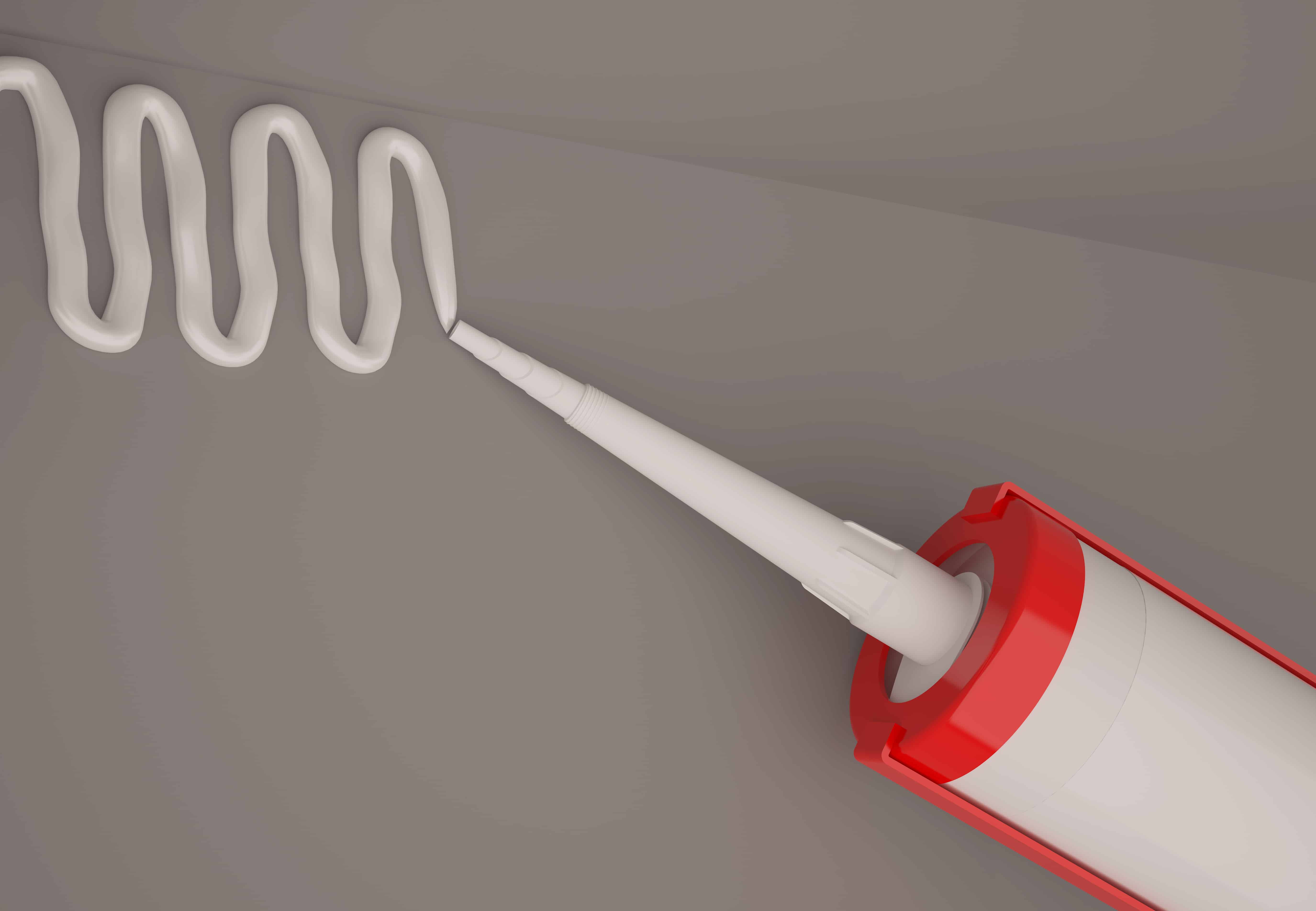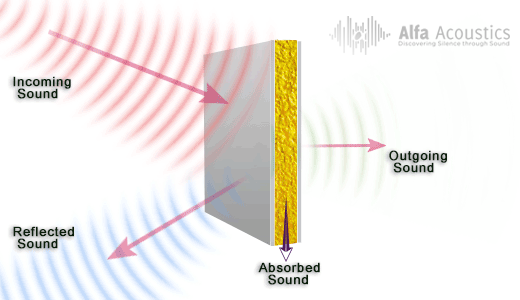There are many products, and materials that can help to soundproof a space. You may be familiar with a few of them: soundproof curtains, acoustically enhanced gypsum drywall, insulation, and foam panels.
However, not many people remember to use acoustic sealant/caulking in their structure assemblies for additional sound damping.
It's important to remember that anywhere that air can leak into, sound can also leak into. By sealing these gaps/holes/air leaks you can prevent the transmission of soundwaves.
Green Glue is considered to be a building industry standard. It’s relatively expensive, but if you buy it in bulk it can help to bring the price down somewhat. Each tube will lay down about 10 feet of caulk if applied in a ½” thickness.
Before choosing any acoustic caulk, it’s important to temper your expectations. A strip or dollop of sealant isn’t going to completely block out the transmission of soundwaves. That being said, Green Glue caulk will make a significant and very noticeable difference.
The sealant has an STC rating of 41. To illustrate, an STC of 40 will generally prevent people from hearing conversations in an adjacent room.
It’s water-based, so it doesn’t have an offensive smell and is easy to clean up. It’s white in color, so it’s easy to paint. It takes only 48 hours to cure, so you’re able to finish work pretty quickly after applying the caulk.
Green Glue won’t adhere to cork, plastic or some metals like brass. It's also best suited for indoor use only. This product (or any good acoustic sealant) should not be used as a substitute for regular caulk, because of its flexible consistency.
Titebond is most well known for their various woodworking related glues and adhesives. Meaning they know and understand that a sealant needs to be both permanently flexible as well as non-migrating.
Titebond's sealant is a latex-based, acrylic polymer (non-reactive) material that's environmentally safe and VOC compliant. The material is UL 723 classified (fire tested) and exceeds the requirements of ASTM C834 (standard specifications for latex sealants).
Titebond notes that coverage for a single 28 oz. cartridge is as follows:
| 1/8" Bead | 1/4" Bead | 3/8" Bead | 1/2" Bead |
| 343 ft. | 86 ft. | 38 ft. | 21 ft. |
The unique formula allows it to adhere to wood or metal studs, concrete, gypsum board (drywall), and other types of building materials. The material is white in color and is paint-able.
Before application, surfaces need to be clean, dry and free from oil, grease and other materials that can affect adhesion. If you expect it to rain 12 hours from application, do not apply. It's also not recommended for continuous submersion or use below the waterline.
StopGap is noted for its superior performance, with an STC rating of 53 when applied in a double layer. This Stopgap sealant is extremely flexible, and may stay pliable for a longer period of time than any other acoustic caulk on the market.
Like the other products we’ve looked at, this is a water-based sealant which is easy to work with and clean up, and won’t leave a smell behind. It applies white, and can be painted after it cures.
You’ll find that many professional music and recording companies use Auralax sealant to soundproof their studios, since this is primarily a product for indoor use (especially since it’s not waterproof).
The caulk is flame-resistant so it’s ideal for indoor applications where there’s a lot of equipment in operation, and is particularly recommended for wall perimeters and around electrical boxes which generate a lot of ambient noise and vibration.
The Stopgap acoustic sealant isn’t right for everyone, particularly those who are trying to block out traffic noise or the neighbors’ parties. It’s outstanding, however, for professional usage – and it’s worth its higher price in those cases.

There’s a good chance that you’ve used silicone caulk in your bathroom, painter’s caulk to fill holes before painting the interior of your home, concrete caulk on your foundation, roof repair caulk for your shingles and flashing, rubber caulk on your gutters, fireproof caulk for your chimney – or regular acrylic latex caulk for general jobs around the house.
The type you’re probably unaware of is acoustic caulk, also called acoustic sealant. This specialized material is designed to work with most materials - wood, gypsum (drywall), metal, and concrete. It's generally water based, non-toxic, paintable, low odor, and non-flammable.
It's also less susceptible to temperature extremes and won't dry out, shrink, crack, or separate itself from the structures it's applied to.
To preface this section, it's important to understand how sound-waves travel.
In order for soundwaves to be transmitted, there needs to be a medium to travel on. Common mediums include air, solids, and water.
As long as there are particles for soundwaves to collide with, sound can travel. This is the same reason sound can't be heard in a vacuum, because there's nothing for soundwaves to vibrate off of.
There are typically three wave patterns or frequencies: low, medium, high.
Soundwaves are also omnidirectional meaning that when a soudwave impacts a structure it will radiate in all directions.
This is all important to understand because as we noted before, air is a medium for soundwaves to travel. If there is an air leak, sound waves can also penetrate it.
This helps to explain the main differences between these two products.
Most types of caulking are quite effective at plugging and sealing holes. The way they do their job, unfortunately, is the reason why they’re not the best choice for soundproofing. Regular caulking will plug holes by filling them and then hardening and solidifying to create a barrier.
That’s fine at first, but over time the hard caulk can crack or shrink – creating new gaps between the caulk and adjacent surfaces. You can guess the rest; those new gaps result in air leaks.
Acoustic caulk is different because it doesn’t harden. Instead, it remains pliable, able to expand or contract as necessary to ensure that holes remain filled and new ones aren’t inadvertently created.
The sealant's consistency is more like rubber, making it extremely durable. It will never get hard, crack, and will adhere to virtually any material, and can be covered with either spackle or tape if desired.
For those reasons, its use isn’t limited to walls or foundations. Acoustic caulk works as a soundproof sealant around doors or windows, between layers of drywall (acoustic compound is better suited for wall assemblies), between walls and floors, or between indoor walls and noise-producing equipment.
The caulk blocks air, as well as sound, and will create a vapor barrier to protect against the spread of moisture, so it’s ideal for nearly any purpose.
With that said, this is the same factor that separates regular sealant from acoustic sealant is its chemical composition.
A regular caulking could very well stop air from penetrating a structure. However it won't be able to do much against the vibrational energy of soundwaves. Where-as acoustic sealant is designed to absorb and damp sound-waves.
There are several important characteristics of acoustic sealant that will impact your purchasing decision:
The best way to compare acoustic caulks is to look at their Sound Transmission Class or STC rating, which is a measure of how much airborne noise a soundproofing product can stop.

Unfortunately, that’s not always possible because some manufacturers don’t reveal (or test for) that number. With that said, the higher the rating, the better. Since the numbers go up on a logarithmic scale, a rating of 26 is a lot higher than a rating of 25, and small increases can make a big difference.
For example, a product with an STC of 38 will eliminate 90% of the noise that an STC 28 product allows through, not 35% (even though if you do the arithmetic, 38 is only 35% higher than 28). If that sounds confusing, think of the Richter scale used to measure earthquakes, where a 5.0 quake is drastically worse than a 4.0 quake because it releases 32 times as much energy.
Some caulks are water-based while others have a solvent base. Their performance is pretty much equal, but they each have different recommended uses.
Water-based sealants are more environmentally-friendly, they smell better, they are easier to manipulate and they’re easier to clean up. They’re best for use on porous materials, but not very effective with dense materials.
Solvent-based options are often a better choice when used to fill holes in dense materials like porcelain and marble. On the other hand, they’re not necessary for (and could even damage) porous materials.
It’s always a good idea to check the label to ensure the sealant is compatible with your intended use. For example, Green Glue acoustic caulk is not effective when used on plastic, cork, or some metals.
Acoustic sealant can be quite expensive, but there are cheaper options to consider as well. For large jobs which will require a lot of caulk, it may be more cost-effective to go with the less-expensive product. Purchasing the priciest sealant and then skimping on its application won’t be worth the money you’d save.
Finally, acoustic caulk can be difficult to work with because of its flexible nature and somewhat-gooey consistency. If you have to plug extremely small or difficult-to-reach holes, you might want to opt for a different type of sealant.

Snoringsource.com is a participant in the Amazon Services LLC Associates Program, an affiliate advertising program designed to provide a means for website owners to earn advertising fees by advertising and linking to amazon(.com, .co.uk, .ca etc) and any other website that may be affiliated with Amazon Service LLC Associates Program.